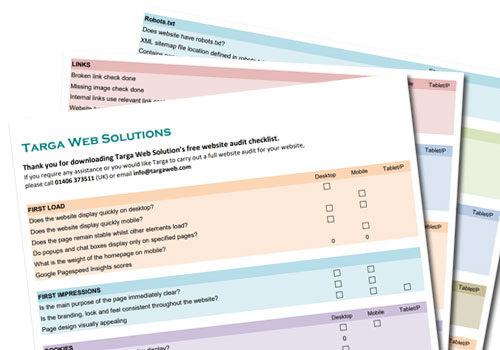What does testing e-Commerce websites include?
What does testing e-Commerce websites include?
Testing e-Commerce websites can cover a wide range of areas, from user experience, functionality, pricing, promotions, payment processing, delivery and much more...
Testing e-Commerce websites can cover a wide range of areas, from user experience, functionality, pricing, promotions, payment processing, delivery and much more...

Make it easy, or else!
e-Commerce platforms provide a self-service
way of allowing customers to choose items, services, admission tickets, courses, etc., and pay for them. We're not there to guide customers through the process, so we need to make it as easy as possible for them, otherwise we risk loosing them... and often for very simple reasons which were overlooked or considered to be unimportant.
Whether customers want to order an item, book tickets, enroll onto a course, or whatever, from search, selection, comparisons, add-ons, promotions, payment processing, delivery, tracking, modifications, cancellations, enrollment, etc., the potential for errors is huge.
Not all faults stare us in the face
No two systems are the same, and the impact that problems can have on each business will vary greatly. Some problems might prevent customers from buying, but not all problems may be so obvious.
In simple terms, if it doesn't look or work as designed, it's a problem, and problems with your eCommerce website could result in:
- increased drop-off rates
- lower conversion rates
- poor SEO performance
- frustrated customers
- complaints
- data not being captured in your company's CRM
- and so on...
Read more about eCommerce testing...
Click to display more details about testing eCommerce websites ⇨
Show less
Hide the following section which provides more details about testing eCommerce websites ⇦
How can we reduce risks of website errors?
How can we reduce risks?
Taking a disciplined approach which gets all stakeholders, from business owners through to developers and testers on board with each requirement is key to success, and the reduction of risks.
- Follow best practices by starting with the business requirements, and then breaking those requirements down in manageable chunks which can be prioritised and implemented in line with your company’s roadmap.
- Use those same requirements to create test plans so that each piece can be tested in as many scenarios as is necessary, and in context with your overall buying process.
- By taking those steps to ensure that everything's working correctly, any bugs (or defects) can be detected and fixed before they go live and are discovered by your customers before you’re aware that they even exist!
That is a simple high level approach to ensuring that your website is fit for purpose, but there are many steps to the process, and without structure, guidance and a plan, things can become messy and costly.
Leaving no stone unturned
Besides experience and plenty of patience, testing e-commerce websites takes a structured plan, discipline, and a curious and analytical mind.
It also requires a robust and reliable method of documenting tests, recording test results, and logging issues or bugs so that they can be prioritised, tracked, fixed and re-tested.
Some problems might exist only on mobile, some only on desktop, and some on both.
The website is just the front end... But there's more!
It's also important to understand that in many case the website (at the front end
) will only display what the databases (at the back end
) deliver to it.
So besides testing what the customer can actually see, some test results could be based on functional website coding, database entries, database queries, or APIs which allow systems to communicate with each other.
Only you can determine the needs of the type and level of testing required...
Simply get in touch if you need assistance.
You determine the needs of the type and level of testing required. Get in touch if you need help.

Testing websites based on customer type
Test based on customers
Whatever you sell on your e-commerce website, in all cases we need to consider that people will make online purchase on their mobiles as well as desktops, laptops and tablets. We should therefore test websites accordingly, and we also need to consider different customer types and their needs.
Personas
or Avatars
are very useful to achieve this.
Guidance on testing e-Commerce websites
It's easy to overlook some things or underestimate the importance of digging deep when testing specific sections and functionality. Each of the points below has been described at high level but could be broken down further.
Bear in mind that user experiences on desktop and mobile can differ widely, and each design and test case should cater for different screen widths and device types.
Besides the user experience on the website, order fulfillment, delivery, cancellation and returns will all have a process. Those processes all factor into the e-commerce experience, and may include some integration with the website which will require testing.
e-commerce testing checklist
Below is a list of check points which could feature in the testing of a typical e-commerce website, but as most e-commerce websites are bespoke to cater for the specific objectives and requirements of each business, each website is expected to have unique test cases which are likely to evolve over time.
Some testing may be required to cover the entire website, or just specific sections. Some testing may need to be focused specifically on the introduction of a new or updated feature, and that might involve functional testing and user acceptance testing (UAT) during development and staging prior to release.
Product selection
⇨⇦
Product searches:
Do you provide a search tool on your website to enable customers to find products? If so, are the search results accurate and complete?Product categorisation:
Are products categorised in a way which makes sense to the customer?Product specifications:
Do you display product specifications for each item, and are they accurate?Product images:
Are product images specific and relevant to each item, or do you make use of generic images to cover a range of product variants?Product comparisons:
Do you provide the means to allow customers to select two or more items for comparison, so they can be viewed side by side? What about mobile? Does the display on mobile require a different layout to avoid clutter?Manufacturer's manuals:
Do you provide access to manufacturers manuals, which could include user guides, product specifications, and installation instructions if relevant?Availability:
If your website is tied to stock levels, are they accurate based on store location and/or delivery?
Product SEO
⇨⇦
SEO for each product:
Is each product or product category capable of being indexed and ranked in search engine results? If so, are all of the relevant HTML meta tags such as Title, Description, H1 and other tags correctly set up?Schema markup:
Do your product pages use Schema markup? If so, is the type of markup correct for the page type, and is the information contain in the schema markup correct? Has each page been tested in accordance with the Schema.org validator tool, and Google's rich results test tool?Pages in XML Sitemap:
Have all of the pages you want search engines to index been include in an XML sitemap, and it that sitemap kept up to date? This can also apply to image sitemaps.
Location based, such as hotels
⇨⇦
Location Information:
Is there sufficient information provided about the location, including full address, opening hours, directions, contact number, email address, etc., plus additional advisory information such as parking, access, nearby train stations, etc?Directions:
Are written directions to the location correct?GPS routes:
Are GPS routes to the location reliable, or do specific directions need to be made clear to customers via the website, and perhaps even on the confirmation email too?Maps:
Do any embedded maps display the correct location?
Location SEO
⇨⇦
SEO for each location:
Does each location have a separate page capable of being indexed and ranked in search engine results? If so, are all of the relevant HTML meta tags such as Title, Description, H1 and other tags correctly set up?Schema markup:
Do your location pages use Schema markup? If so, is the type of markup correct for the page type, and is the information contain in the schema markup correct? Has each page been tested in accordance with the Schema.org validator tool, and Google's rich results test tool?Pages in XML Sitemap:
Have all of the pages you want search engines to index been include in an XML sitemap, and it that sitemap kept up to date? This can also apply to image sitemaps.Google Business Profile:
Does each location have a separate Google Business Profile depicting it's location, correct contact info and hours of operation (if relevant)
Pricing
⇨⇦
Cost of goods:
Are the prices displayed correct for each item and variant (such as size and colour)?What's included:
Is it clear to customers whether the price is inclusive of tax and any other charges such as delivery, etc?Delivery costs:
Is delivery included? Do you offer free delivery for orders over a certain value? Do you provide delivery options at different price points?
Order status and options
⇨⇦
Status:
Do you provide a status of a customer's order, from placement through dispatch to delivery?Enquiries:
Do you provide a reliable system for customers to contact you for an update on their order status?Cancellation:
Are the options, restrictions and any charges for cancellation clearly stated in the terms?Returns:
Is your returns policy clear? Do you allow returns other than when goods are faulty, and are any timeframes and costs clearly stated?
Offers and Promotion Codes
⇨⇦
Offer criteria:
Do promotional offer banners display dynamically on your website based on dates, customer type, purchase history and other criteria?Testing offer criteria:
Have any product range or product specific or offers been fully tested to ensure that they will only work when all conditions have been met?Invalid or expired codes:
Do invalid or expired discount codes return a clear message to indicate that they have not been applied?Multi-buy discounts:
Do you offer discounts on the purchase of multiple items? If so, must those items be the same as each other, or can they be from a range of items such as those inMix and Match
offers.Changes after discount applied:
If the customer successfully applies a discount code but then makes changes to the contents of the shopping basket which could result in the discount terms being breached, is there sufficient messaging to notify the customer?
Shopping Cart
⇨⇦
Summary:
Does the shopping cart accurately summarise what has been selected and added to the cart?Selected items:
Are all selected items displayed clearly in the shopping cart?Item links:
Are selected items in the shopping cart able to link back to their original product page?Quantities :
Are item quantities displayed in the shopping cart?Quantity adjustments:
Can the customer adjust the quantities from within the shopping bastet, and also remove specific items if required?Price adjustments:
Does the total price get correctly updated when a customer adds or removes an item?Discounts:
Are any discounts or promotions accurately factored into the pricing, either during item selection, or a recalculation at the shopping basket stage?Delivery options:
Are delivery options and costs clearly explained?
Payments
⇨⇦
Accepted MOPs:
Which methods of payment can you accept?Debit cards:
Do you accept debit cards, and if so, are there conditions and restrictions attached?Payment authorisation:
Do you use a payment authorisation system such as Verified by Visa or MasterCard Securecode? If so, do the pass and fail response codes result in the correct handling on your website?Payments testing:
Have all of the above been thoroughly tested?Certificates:
If there are specific certificates based on source country, are these all still valid and are the expiration dates known? Renewal of certificates is not a testing function, but expired certificates can result in failure of the payment process, so you'll need a reliable way of being reminded of any certs which are imminently due to expire.
Get in touch...
If you feel that Targa can help with your e-Commerce Testing, either use the form below, or if you prefer you can email or phone:
Fields marked with * are mandatory

This article was written by Daron Harvey, founder of TargaWeb. Daron is now in his 29th year of professional website design, development, testing and management, including 21 years on the development and management of Hertz multilingual global e-commerce platform.





